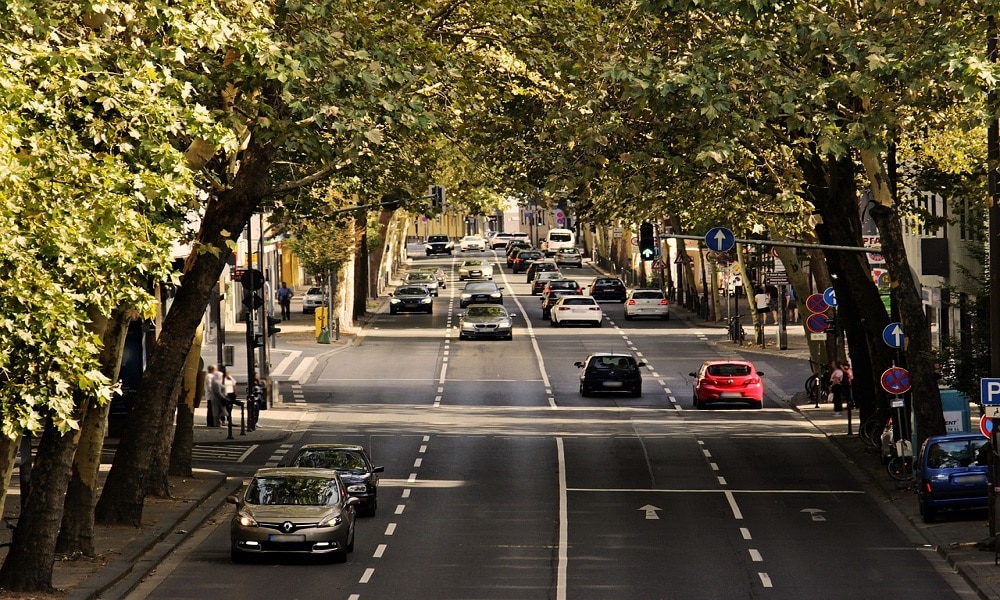As global urbanization accelerates, cities are evolving — and so are the ways we move through them· Congested roads, limited parking, and growing environmental concerns have made traditional vehicles increasingly impractical in densely populated areas· Fortunately, technological innovations in the automotive and mobility sectors are transforming how we experience urban transportation· Searching car finance deals at carmoney.co.uk helps people find the right car for city living.
From electric vehicles (EVs) to smart traffic systems, and from ride-sharing platforms to sustainable mobility policies, businesses and consumers alike are navigating a whole new world of driving· In this article, we explore how technology is changing the way we drive in cities — and how businesses are leveraging this shift to innovate, profit, and lead the way forward·
The Compact Car Revolution: Small Size, Big Impact
Compact cars have always had their place in the city· Vehicles like the Toyota Yaris, Honda Fit, and Mini Cooper have long been loved for their maneuverability and small footprints· But today, being compact is no longer enough· Cars must also be smart, efficient, and eco-conscious·
Thanks to IoT (Internet of Things) integration and modern design thinking, manufacturers are creating cars specifically for urban driving· Innovations such as automatic parking assistance, rear-view sensors, lane detection, and adaptive cruise control are making compact vehicles safer and more efficient in city environments·
According to Statista, the market value of connected cars globally is expected to reach $191 billion by 2030, highlighting the massive business potential behind smart mobility· (Source)
Electric Vehicles: The Sustainable Urban Alternative
One of the most powerful disruptions in city driving is the rise of electric vehicles (EVs)· Not only do EVs emit zero tailpipe emissions, but they also align with evolving regulatory policies aimed at combating air pollution·
Cities like Oslo, Amsterdam, and San Francisco are providing tax breaks, toll exemptions, and preferential parking to encourage EV adoption· EVs which include the Nissan Leaf, Chevy Bolt, and Tesla Model 3 are regular attractions on urban roads·
Even the most important businesses are embracing EVs· Amazon, for instance, has ordered over one hundred thousand electric powered transport trucks as part of its commitment to reaching internet-zero carbon by way of 2040· (The Verge)
Charging infrastructure is also enhancing swiftly· With lots of public charging stations throughout North America and Europe, drivers can recharge their motors as without difficulty as they could fuel at a gasoline station — now and then even faster with speedy-charging networks like Electrify America or Tesla Superchargers·
Smart Driving and AI: Making City Streets Safer
The integration of Artificial Intelligence (AI) and machine learning in vehicles has drastically enhanced the way cars respond to busy environments·
Key features such as:
- Advanced Driver Assistance Systems (ADAS)
- Collision Avoidance Sensors
- Pedestrian Detection
- Real-Time Traffic Updates
…are now embedded in many modern vehicles· These systems help reduce accidents, manage driver fatigue, and improve route optimization·
Tech giants like Google and Apple are also entering the space· Google’s Waymo and Apple’s rumored Project Titan are both exploring self-driving technologies for commercial and urban use·
The potential market impact is enormous· A McKinsey & Company report estimates that autonomous vehicles could generate $300 to $400 billion annually by 2035· (McKinsey)
Ride-Sharing and Micro-Mobility: The New Urban Norm
Ride-sharing apps like Uber, Lyft, and Bolt have already changed how millions of people get around cities· But a new wave of mobility tools — including e-scooters, bike-sharing platforms, and electric mopeds — is gaining traction, especially among younger and eco-conscious users·
According to Deloitte, shared mobility services are expected to generate $1·2 trillion in consumer spending by 2030· (Deloitte)
Companies like Bird and Lime now operate in over 100 cities globally· These micro-mobility solutions not only reduce congestion but also improve accessibility for short-range travel, solving the “last mile” problem many commuters face·
Businesses in hospitality, tourism, and delivery are also integrating these tools into their operations· For instance, some hotels offer guests access to e-bikes or e-scooters as part of their amenities·
Urban Infrastructure Is Catching Up
Governments are investing heavily in smart infrastructure to support the next generation of urban mobility·
Initiatives include:
- Dedicated EV charging zones
- AI-based traffic lights that reduce waiting times
- Smart parking systems that direct drivers to available spots via apps
- Congestion pricing models to limit traffic during peak hours
In cities like London and Singapore, congestion pricing has already led to a 30% reduction in traffic and a significant drop in pollution· (World Economic Forum)
What It Means for Businesses
These mobility shifts create major opportunities for businesses in the following ways:
- Fleet management
- EV production
- AI software development
- Data analytics for smart cities
- Subscription-based vehicle services
Startups and tech giants alike are competing to capture market share in these fast-growing areas· Businesses that adapt quickly — especially those investing in sustainable, tech-forward transportation models — will stand to benefit the most·
Conclusion
City driving is no longer just about moving from point A to point B· It’s about navigating an interconnected system of technology, sustainability, convenience, and innovation·
For consumers, this means better safety, lower emissions, and less time stuck in traffic· For businesses, it’s a call to innovate and meet the needs of a new era in mobility·
As urban populations grow, those who embrace the fusion of technology and transportation will shape the future of our cities — and lead the next frontier in business·


